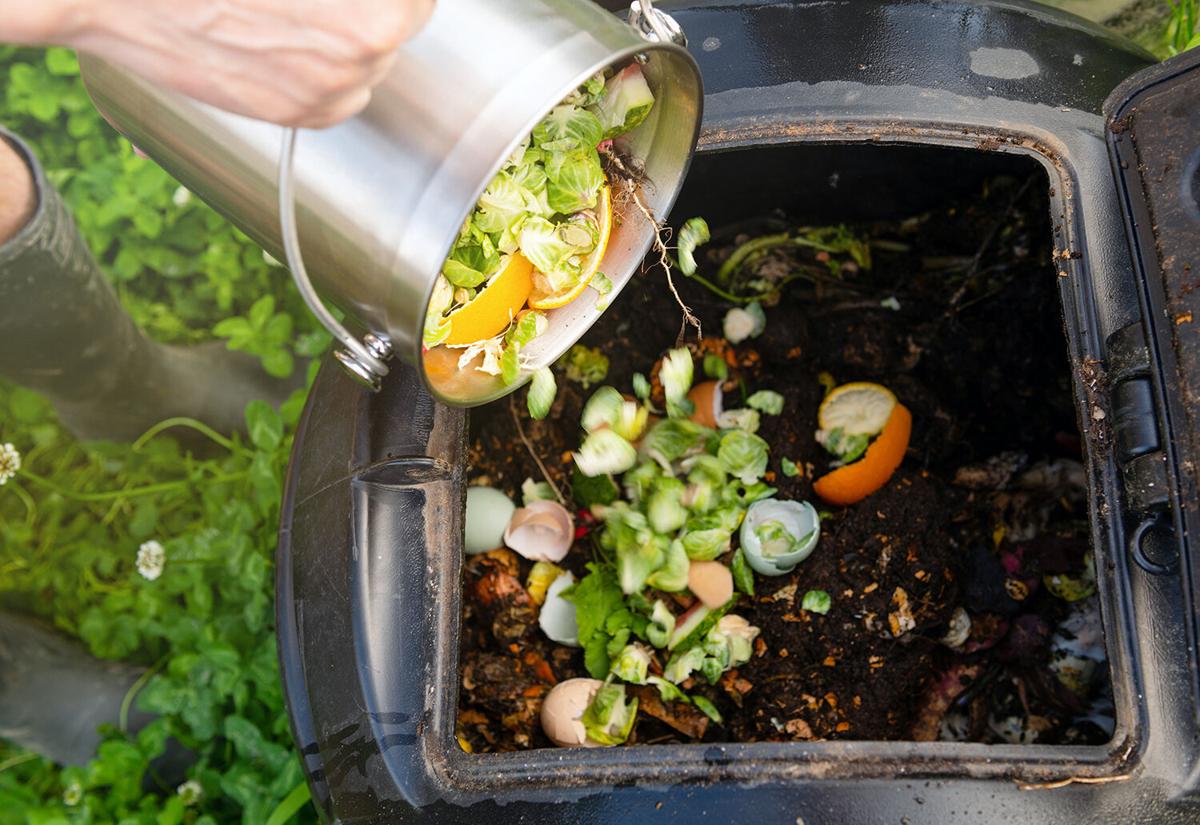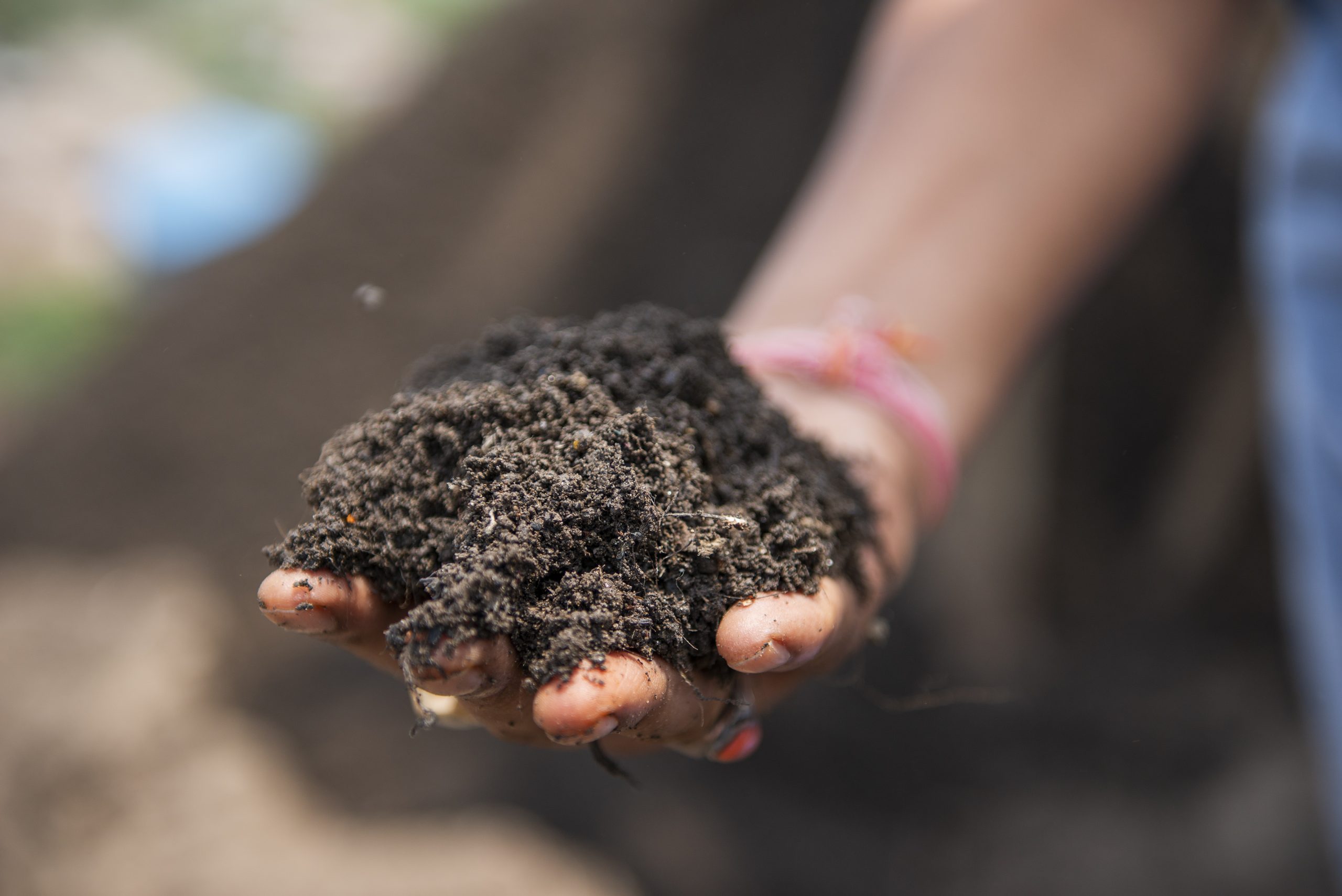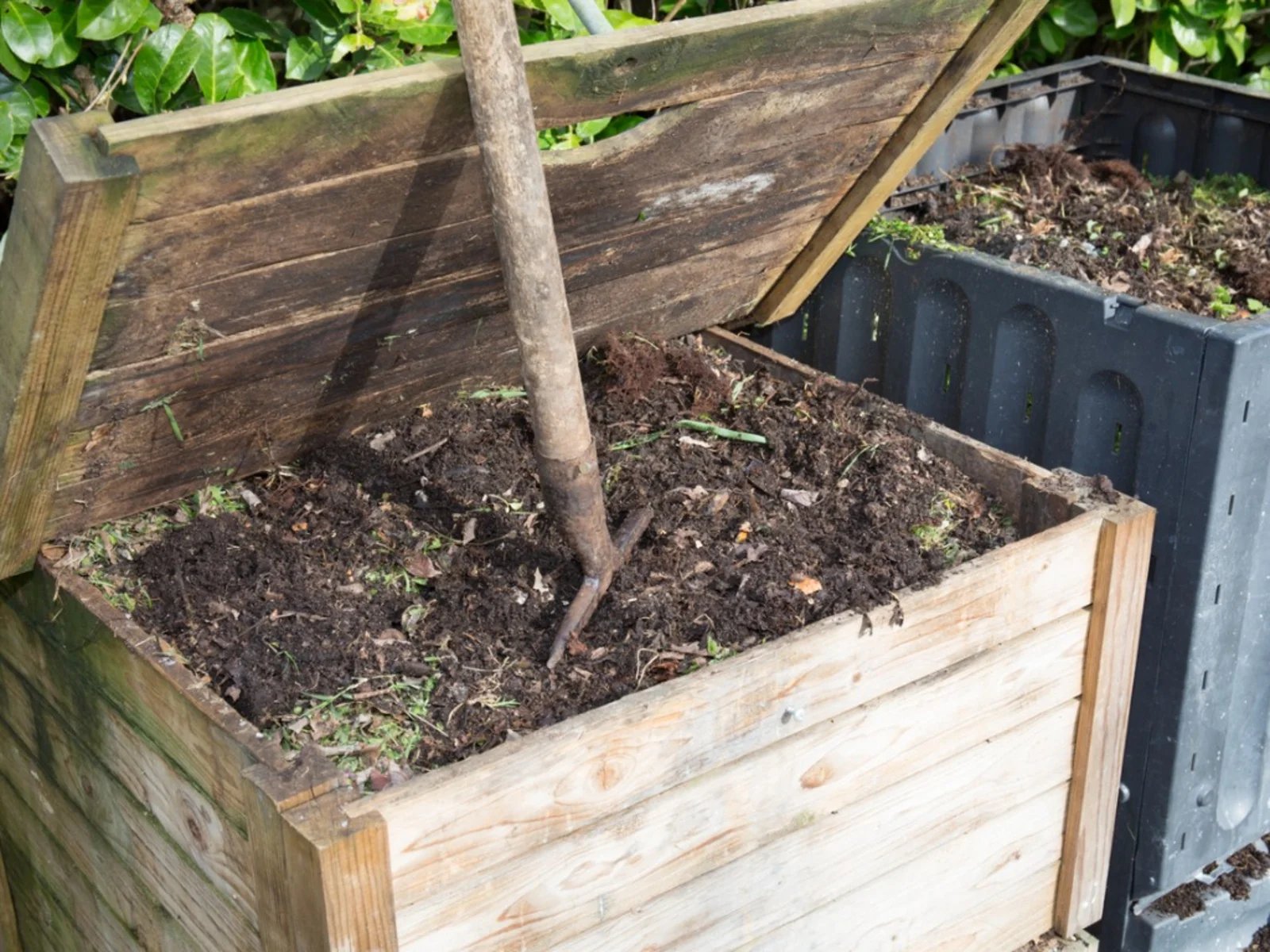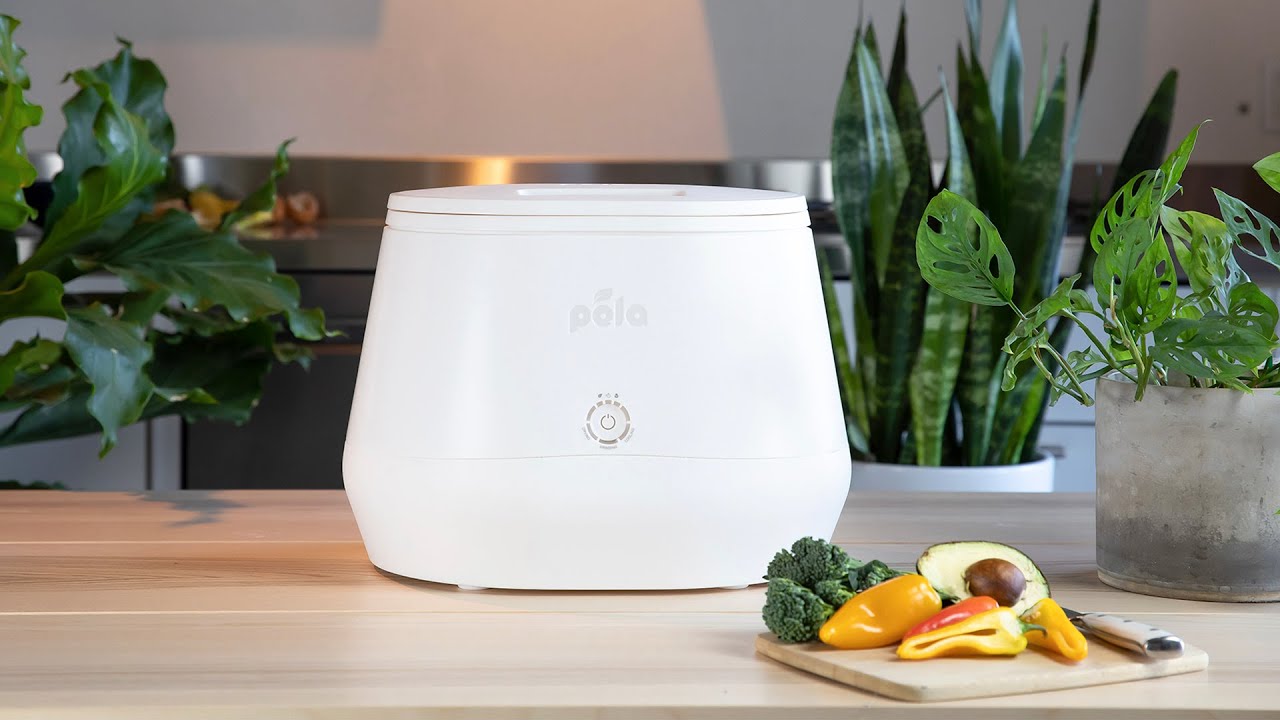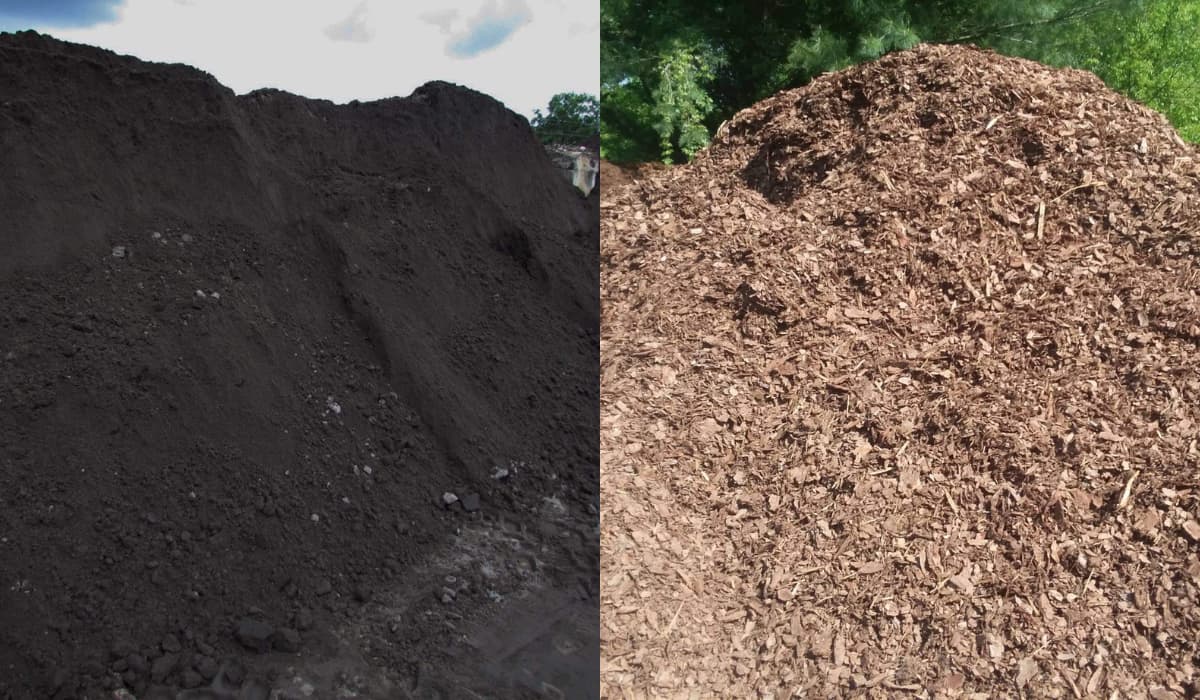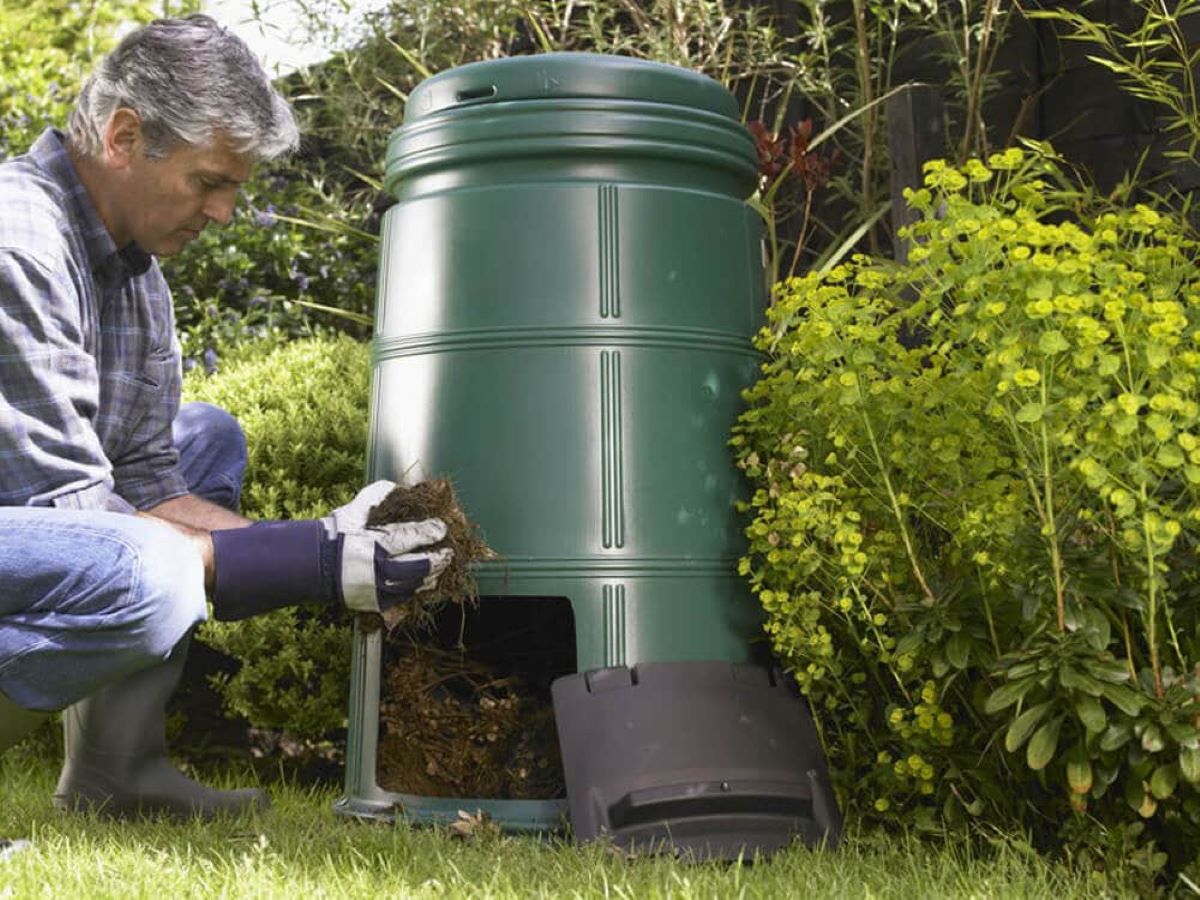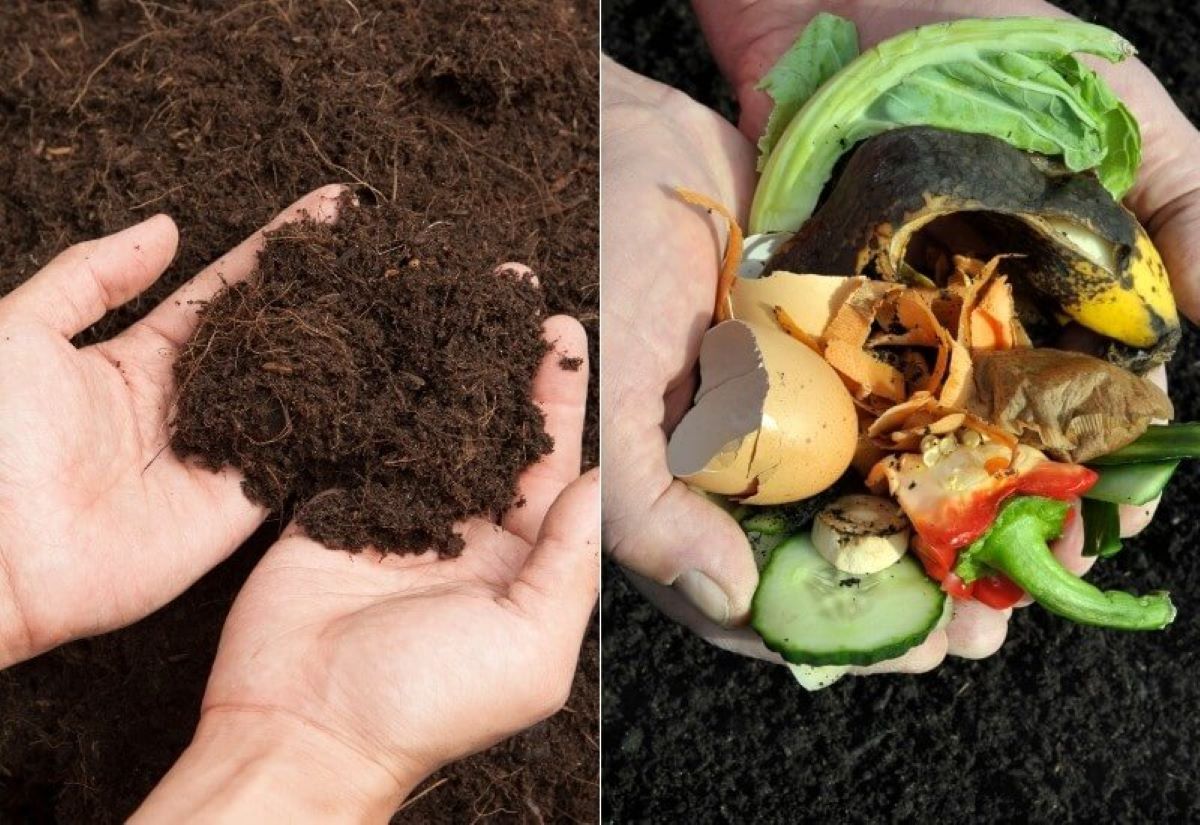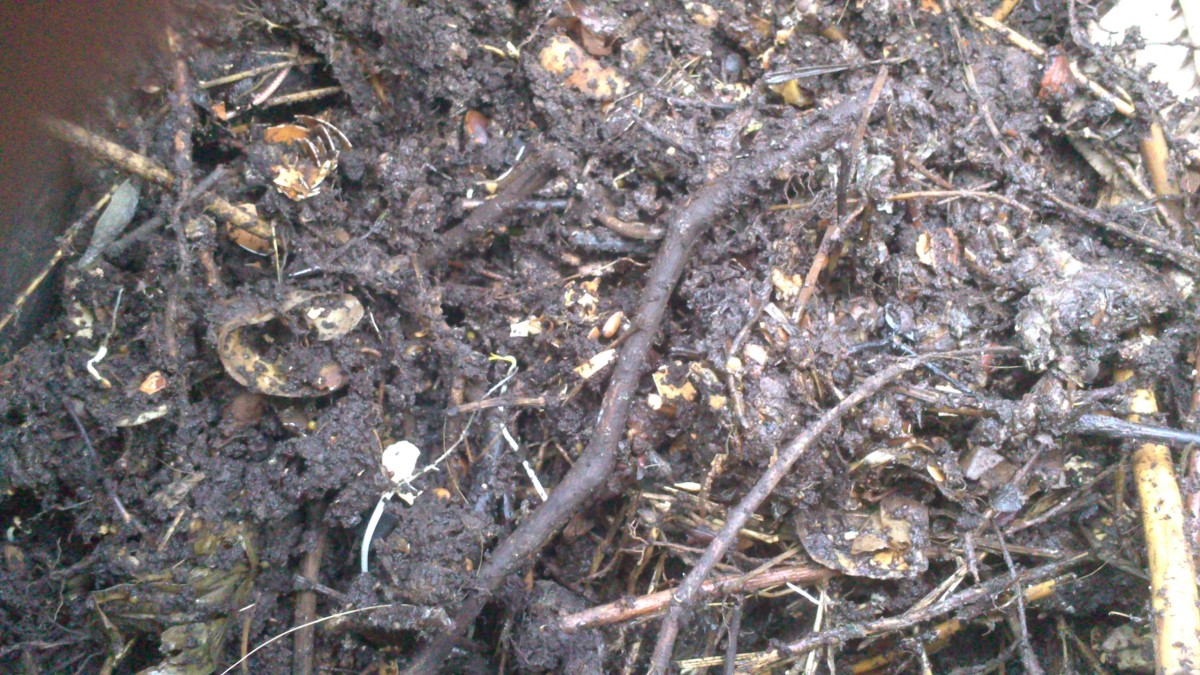Home>Gardening Tips and Tricks>Eco-Friendly Gardening>What Is Cotton Burr Compost
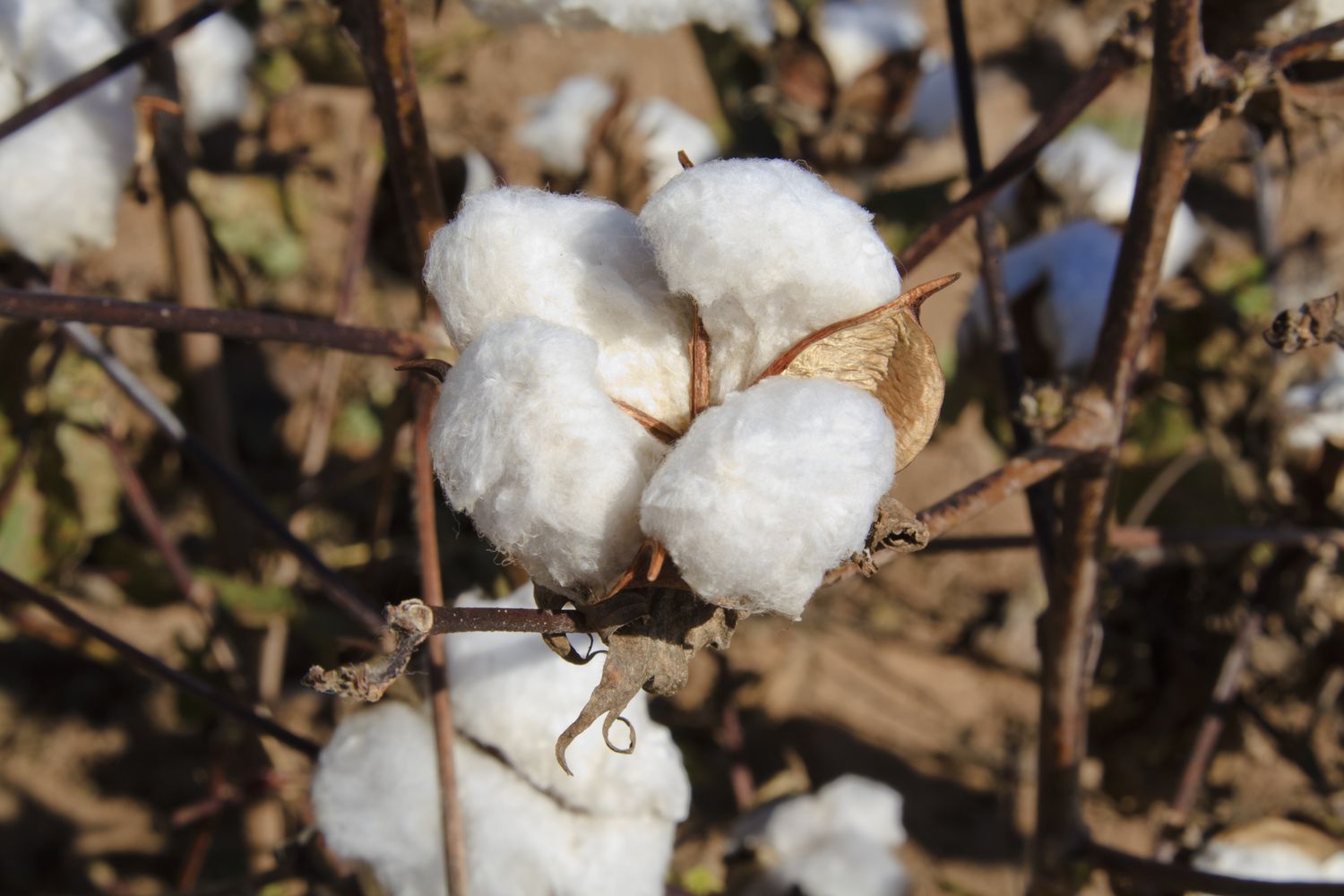

Eco-Friendly Gardening
What Is Cotton Burr Compost
Modified: February 6, 2024
Learn about cotton burr compost and its benefits for eco-friendly gardening. Discover how this organic compost helps improve soil health and promotes sustainable gardening practices.
(Many of the links in this article redirect to a specific reviewed product. Your purchase of these products through affiliate links helps to generate commission for Chicagolandgardening.com, at no extra cost. Learn more)
Table of Contents
Introduction
When it comes to eco-friendly gardening, finding natural and sustainable alternatives to traditional gardening practices is essential. One such eco-friendly option that has gained popularity in recent years is cotton burr compost. But what exactly is cotton burr compost, and how can it benefit your garden?
Cotton burr compost is a type of compost made from the outer hulls of cotton seeds. These hulls, also known as burrs, are usually a waste product of the cotton industry. Through a process of decomposition, the burrs are transformed into a nutrient-rich organic material that can be used to improve soil quality and promote plant growth.
Using cotton burr compost in your garden offers numerous benefits. Firstly, it helps to increase the fertility of the soil by providing essential nutrients such as nitrogen, phosphorus, and potassium. These nutrients are vital for plant growth and development, and the slow-release nature of cotton burr compost ensures that they are made available to plants over an extended period.
Additionally, cotton burr compost enhances the structure of the soil by improving its water-holding capacity and drainage. This is particularly beneficial for gardens with clay or sandy soil, as it helps create a well-balanced soil environment that supports healthy root growth. The increased water retention also means that plants are better able to withstand dry periods, reducing the need for excessive watering.
Furthermore, cotton burr compost aids in weed suppression by forming a natural barrier that inhibits weed growth. This reduces the need for herbicides and manual weeding, making it an eco-friendly alternative for maintaining a weed-free garden.
In the next section, we will explore in more detail how to use cotton burr compost effectively in your garden and the factors to consider when incorporating it into your gardening practices.
Definition of Cotton Burr Compost
Cotton burr compost, as the name suggests, is a type of compost that is derived from the outer hulls of cotton seeds, also known as burrs. These burrs are the protective coverings of the cotton seeds and are usually considered a waste product in the cotton industry.
To create cotton burr compost, the burrs are collected and subjected to a process of decomposition through microbial activity. This process breaks down the organic material, transforming it into a nutrient-rich compost that can be used as a soil amendment in gardening and agriculture.
The decomposition process of cotton burr compost is essential in creating a biologically active and beneficial soil amendment. During decomposition, microorganisms such as bacteria and fungi break down the organic matter, releasing nutrients and improving the overall structure of the compost.
Cotton burr compost is typically dark brown in color and has a fine, crumbly texture. It is a natural and sustainable alternative to chemical fertilizers, providing essential nutrients to plants without the potential harmful effects to the environment.
It is important to note that cotton burr compost is not the same as cottonseed meal. While both are derived from cotton seeds, cottonseed meal is obtained by crushing the seeds to extract the oil, leaving behind a high protein meal that is used as animal feed or fertilizer. Cotton burr compost, on the other hand, is made specifically from the outer hulls of the cotton seeds.
Cotton burr compost is widely available in garden centers, nurseries, and online stores. It can be purchased in bags or in bulk, depending on the scale of your gardening needs. Alternatively, if you have access to cotton burrs, you can also create your own compost by properly composting the burrs over time.
In the next section, we will explore the benefits of using cotton burr compost and how it can improve your gardening practices.
Benefits of Using Cotton Burr Compost
Using cotton burr compost in your garden offers a range of benefits that can improve the health and vitality of your plants. Let’s explore some of the key advantages of incorporating cotton burr compost into your gardening practices:
- Nutrient-rich soil: Cotton burr compost is a rich source of essential nutrients such as nitrogen, phosphorus, and potassium. These nutrients are vital for plant growth and development, promoting healthy foliage, strong root systems, and bountiful harvests. The slow-release nature of cotton burr compost ensures a gradual and steady supply of nutrients to plants over an extended period, reducing the risk of nutrient imbalances.
- Improved soil structure: The addition of cotton burr compost to the soil helps enhance its structure. It improves water retention, preventing excess runoff and promoting deep root penetration. At the same time, it improves soil drainage, preventing waterlogging and the risk of root rot. The improved soil structure creates optimal growing conditions for plants, allowing them to access water and nutrients more efficiently.
- Enhanced soil fertility: Cotton burr compost is not only a nutrient source but also a soil conditioner. It enriches the soil with organic matter, improving its overall fertility and allowing beneficial microorganisms to thrive. Increased microbial activity in the soil helps break down organic matter, releasing nutrients and improving nutrient cycling, ultimately leading to healthier and more productive plants.
- Natural weed suppression: Cotton burr compost acts as a natural weed suppressant. When spread as a mulch layer on the soil surface, the compost forms a physical barrier that inhibits weed growth. This reduces the competition for resources between weeds and desired plants, minimizing the need for synthetic herbicides and minimizing manual weeding efforts.
- Environmental sustainability: By using cotton burr compost, you are promoting sustainable gardening practices. It is a natural and eco-friendly alternative to chemical fertilizers, reducing the reliance on synthetic inputs that may have negative impacts on the environment. Cotton burr compost is derived from a waste product of the cotton industry, making it a recycled material that contributes to waste reduction and resource conservation.
These are just a few of the many benefits of using cotton burr compost in your garden. Whether you are growing flowers, vegetables, or fruits, incorporating this nutrient-rich compost can help enhance the overall health and productivity of your garden.
In the next section, we will explore how to effectively use cotton burr compost in your gardening practices and the factors to consider when incorporating it into your garden.
How to Use Cotton Burr Compost
Using cotton burr compost in your garden is a simple and effective way to improve soil fertility and promote plant growth. Here are some guidelines on how to incorporate cotton burr compost into your gardening practices:
- Prepare the soil: Before applying cotton burr compost, ensure that the soil is well-prepared. Clear away any weeds or debris and loosen the soil with a garden fork or tiller. This will create a receptive environment for the compost and allow it to integrate with the soil more effectively.
- Calculate the application rate: Determine the appropriate amount of cotton burr compost needed for your garden. The general recommendation is to apply a 1-2 inch layer of compost on the soil surface. If you are starting with poor or depleted soil, you may want to apply a slightly thicker layer to provide additional nutrients and organic matter.
- Spread the compost: Evenly distribute the cotton burr compost over the desired area. Use a rake or garden fork to spread it out and ensure an even layer. Avoid piling the compost against plant stems or trunks to prevent moisture buildup and potential rotting.
- Incorporate the compost: Once the compost is spread, gently incorporate it into the top layer of soil. This can be done by using a garden fork or tiller to lightly blend the compost into the existing soil. Alternatively, you can let earthworms and other soil organisms naturally incorporate the compost as they burrow through the soil.
- Water thoroughly: After applying and incorporating the compost, water the area thoroughly. This will help settle the compost into the soil and ensure proper distribution of nutrients. It is essential to maintain adequate moisture levels in the soil to support plant growth and encourage the breakdown of the compost material.
- Apply regularly: To maintain soil fertility and reap the long-term benefits of cotton burr compost, it is recommended to reapply the compost annually or as needed. Adding a fresh layer of compost each growing season will continue to enhance the health of your soil and plants.
It is important to note that cotton burr compost is not a substitute for proper plant care and cultivation practices. It should be used as a supplement to a well-balanced garden routine that includes proper watering, regular fertilization, and adequate pest and disease management.
By following these guidelines, you can effectively utilize cotton burr compost to improve soil quality and create an optimal environment for your plants.
In the next section, we will discuss the factors to consider when using cotton burr compost and address some common misconceptions about its usage.
Factors to Consider When Using Cotton Burr Compost
While cotton burr compost offers numerous benefits for your garden, there are important factors to consider when incorporating it into your gardening practices. Understanding these factors will help you make the most of this organic soil amendment. Here are some key considerations:
Soil pH: Cotton burr compost has a slightly acidic pH, which can affect the pH balance of your soil over time. Before using cotton burr compost, it’s crucial to determine the pH of your soil and consider the pH requirements of your plants. If your soil is already acidic, using cotton burr compost may further lower the pH. In such cases, it’s advisable to monitor the pH levels and take appropriate measures to maintain a balanced pH for optimal plant growth.Compost maturity: The maturity of cotton burr compost can vary depending on the decomposition process. It’s essential to ensure that the compost is fully decomposed and matured before using it in your garden. Immature compost may contain high levels of nitrogen, which can burn plant roots and cause nutrient imbalances. Look for compost that has a dark, crumbly texture and a pleasant earthy smell.Application timing: Consider the appropriate timing for applying cotton burr compost to your garden. It’s generally recommended to incorporate the compost into the soil during the spring or fall when the weather is mild and the soil is workable. Avoid applying compost during extreme heat or cold, as it may not integrate well into the soil or provide the intended benefits.Plant-specific considerations: Different plants have varying nutrient requirements and growing preferences. When using cotton burr compost, consider the specific needs of the plants you are growing. Some plants may benefit from higher nitrogen levels, while others may require more phosphorus or potassium. Research the nutritional requirements of your plants and gauge the appropriate amount and frequency of compost application accordingly.Compost sourcing: It’s important to source high-quality cotton burr compost from reputable suppliers or manufacturers to ensure its safety and effectiveness. Look for compost that has been properly processed and tested for any contaminants, such as pesticides or heavy metals.
By considering these factors, you can make informed decisions when using cotton burr compost and tailor its application to suit your specific gardening needs.
In the next section, we will address some common misconceptions about cotton burr compost and provide a comparison with other composting materials.
Common Misconceptions About Cotton Burr Compost
Despite its many benefits, there are a few common misconceptions surrounding the use of cotton burr compost in gardening. By addressing these misconceptions, we can gain a better understanding of this organic soil amendment. Here are some misconceptions and the realities about cotton burr compost:
- Misconception: Cotton burr compost is harmful to plants or can cause diseases.
- Misconception: Cotton burr compost is only suitable for certain types of plants.
- Misconception: Cotton burr compost is difficult to find or expensive.
- Misconception: Cotton burr compost is not as effective as other composting materials.
Reality: When properly composted, cotton burr compost is safe and beneficial for plants. The decomposition process kills most weed seeds and plant pathogens, reducing the risk of disease transmission. Using mature and well-composted cotton burr compost ensures the absence of any harmful substances and promotes plant health.
Reality: While some plants may have specific nutrient requirements, cotton burr compost can benefit a wide range of plants, including flowers, vegetables, shrubs, and trees. Its balanced nutrient content and ability to improve soil structure make it a versatile choice for most garden plants.
Reality: Cotton burr compost is widely available and relatively affordable. Many garden centers, nurseries, and online stores carry cotton burr compost. It can be purchased in bags or in bulk, depending on your gardening needs and budget.
Reality: Cotton burr compost offers similar benefits to other organic composting materials, such as kitchen scraps, yard waste, or animal manure. It provides a balanced mix of nutrients, improves soil structure, and enhances the overall health of the garden. The choice of composting material depends on availability, soil requirements, and personal preferences.
Understanding the realities behind these misconceptions can help gardeners make informed decisions about using cotton burr compost in their gardening practices.
In the final section, we will compare cotton burr compost with other composting materials.
Comparison of Cotton Burr Compost and Other Composting Materials
When it comes to choosing the right composting material for your garden, it’s helpful to compare different options and understand their qualities. Let’s compare cotton burr compost with other commonly used composting materials:
- Kitchen Scraps: Kitchen scraps, such as fruit and vegetable peels, coffee grounds, and eggshells, are readily available and can be composted at home. They provide a good source of organic matter and nutrients. However, they may require additional materials, such as leaves or yard waste, to achieve a balanced compost. Cotton burr compost, on the other hand, offers a more comprehensive nutrient profile and helps improve soil structure.
- Yard Waste: Yard waste, including grass clippings, leaves, and small branches, can be composted to create a nutrient-rich organic material. While yard waste compost provides good organic matter, it may lack specific nutrients that plants require. By incorporating cotton burr compost into the mix, you can enhance the nutrient content and optimize soil fertility.
- Animal Manure: Animal manure is a valuable composting material that offers high nitrogen content, making it particularly beneficial for promoting plant growth. However, using animal manure requires careful handling to ensure proper decomposition and the removal of potential pathogens. Cotton burr compost provides a safer and easier-to-handle alternative while still offering essential nutrients for plants.
- Commercial Compost: Commercially produced compost is often a blend of various organic materials, including food waste, yard waste, and manure. It is typically screened and processed to ensure a balanced and mature compost product. While commercial compost can be effective, it may lack the specific nutrient composition or purity that cotton burr compost offers.
Ultimately, the choice of composting material depends on factors such as availability, specific plant requirements, and personal preferences. Cotton burr compost stands out as a versatile option that provides a nutrient-rich, safe, and sustainable solution for improving soil fertility and supporting overall plant health.
By understanding the qualities and comparing different composting materials, you can make an informed decision on the best composting approach for your garden.
Now that we have explored the benefits, usage, considerations, misconceptions, and comparisons of cotton burr compost, you are equipped with the knowledge to incorporate this eco-friendly gardening practice into your own garden. Happy gardening and may your plants thrive with the help of cotton burr compost!
Conclusion
Cotton burr compost is a valuable and eco-friendly resource that offers numerous benefits for your garden. It provides a natural and sustainable alternative to chemical fertilizers, improving soil fertility, enhancing soil structure, and promoting healthy plant growth. By incorporating cotton burr compost into your gardening practices, you can create a thriving and sustainable garden environment.
Through the decomposition of the outer hulls of cotton seeds, cotton burr compost transforms into a nutrient-rich organic material that enriches the soil with essential nutrients. Its slow-release nature ensures a steady supply of nutrients to plants over time, reducing the risk of nutrient imbalances. Additionally, cotton burr compost improves the soil’s water-holding capacity and drainage, making it an excellent choice for a variety of soil types.
When using cotton burr compost, it is essential to consider factors such as soil pH, compost maturity, application timing, and plant-specific needs. By taking these factors into account, you can maximize the benefits of cotton burr compost and tailor its application to suit your gardening requirements.
By dispelling common misconceptions and comparing cotton burr compost with other composting materials, it is evident that cotton burr compost is a versatile and effective option for improving soil fertility and plant health. It offers a safe and sustainable solution for eco-friendly gardening practices.
So, whether you are a seasoned gardener or just starting out, consider incorporating cotton burr compost into your garden routine. Explore the benefits, experiment with different applications, and witness the transformation of your garden into a thriving oasis of greenery and beauty.
As you embark on your journey towards eco-friendly gardening, remember that every step you take towards sustainable practices contributes to a healthier planet for future generations. So, embrace the power of cotton burr compost and let nature work its magic in your garden!
